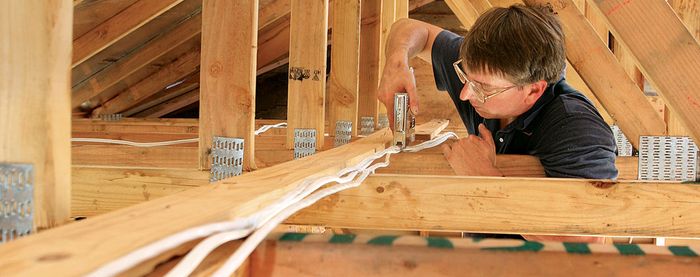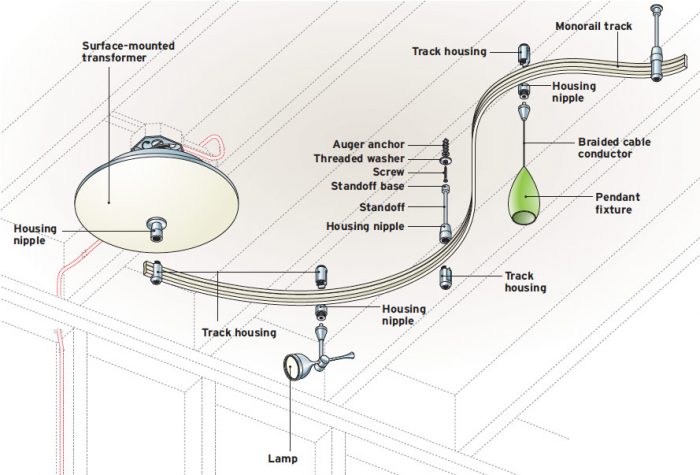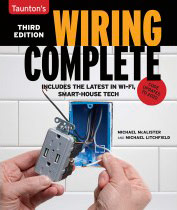Installing Low-Voltage Monorail Track Lighting
Track-lighting systems are inherently complex, so follow the guidelines carefully for mounting the transformer, hanging the track, and installing the light fixtures.
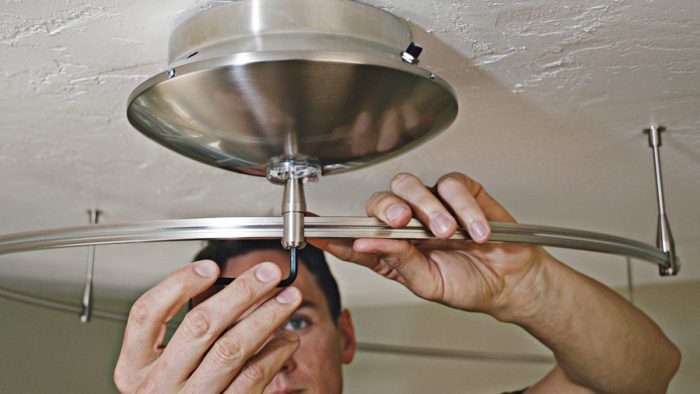
Before installing lo-vo monorail track lighting, turn off the power at the breaker panel or fuse box. As with any low-voltage system, a transformer will reduce the 120v current to 12v or 24v. Because monorail track systems have a lot of small parts that are easily lost, don’t open the packages until you’re ready to use the parts.
In cross-section, the monorail track is two square pieces of chrome-plated copper conductor sandwiched together with a clear (insulating) plastic piece. Although the track is sturdy, it can be bent freehand or shaped against a curved piece of plywood.
Low-Voltage Monorail System
In the installation shown, the transformer is surface-mounted in a circular housing. Although the transformer housing must be mounted to a ceiling box to be adequately supported, individual standoff supports can be anchored in drywall or plaster alone because the track and fixtures are lightweight. The illustrations have been adapted from installation instructions from a product by Tech Lighting; your instructions may be different.
Locating the Track & Standoffs
If possible, before working overhead shape the track sections of your monorail system and preassemble them on the floor, then use a plumb bob or laser level to plumb up to the ceiling. First determine where you’ll place the transformer box for the system, then mark off the standoffs that will mount the track to the ceiling.
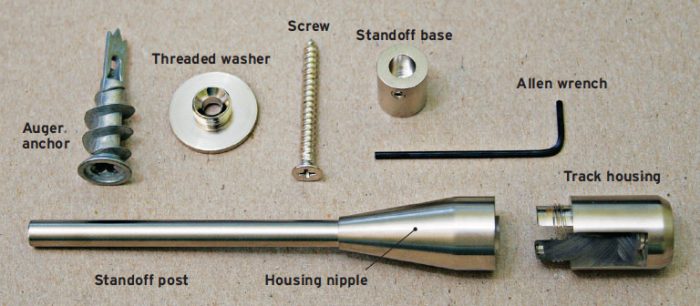
With a helper holding one end, hold sections of the track against the ceiling and mark off standoff points at the track ends, where sections meet, and at intervals suggested by the fixture maker—usually, every 3 ft. 1. Standoffs have multiple parts, which anchor them to the ceiling and support the track.
Fortunately, because the track weighs little you can mount standoffs almost anywhere on a drywall or plaster ceiling, using auger anchors with wide threads. (That is, you don’t need to mount standoffs to framing.) Sink the anchors flush, then screw a threaded washer to each anchor 2. Then, using a setscrew, screw the standoff base to that threaded washer 3.
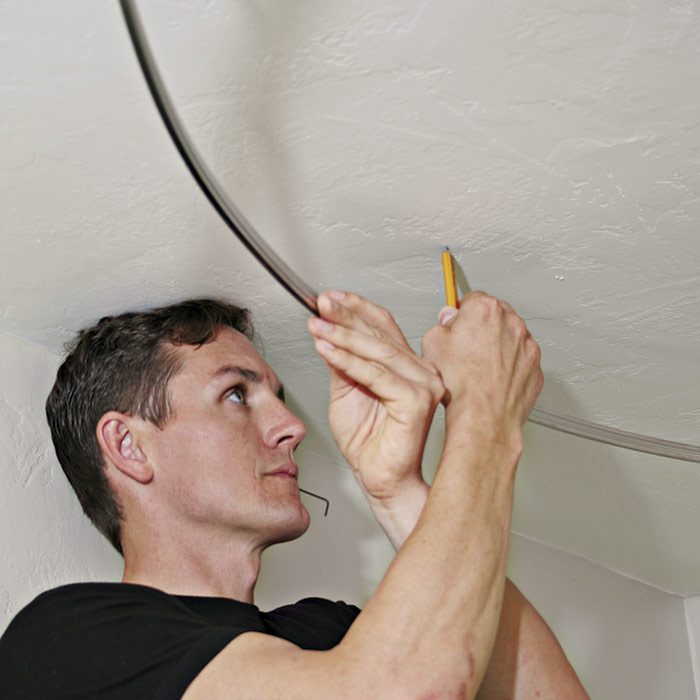 |
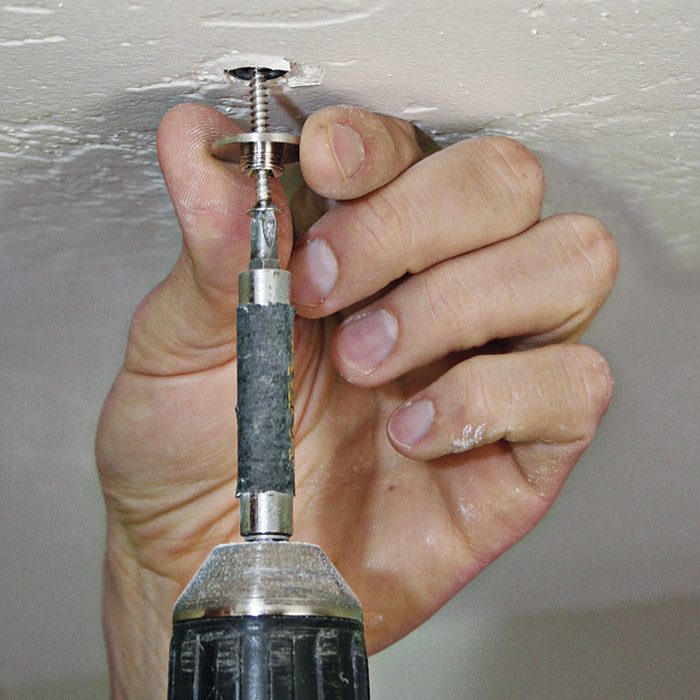 |
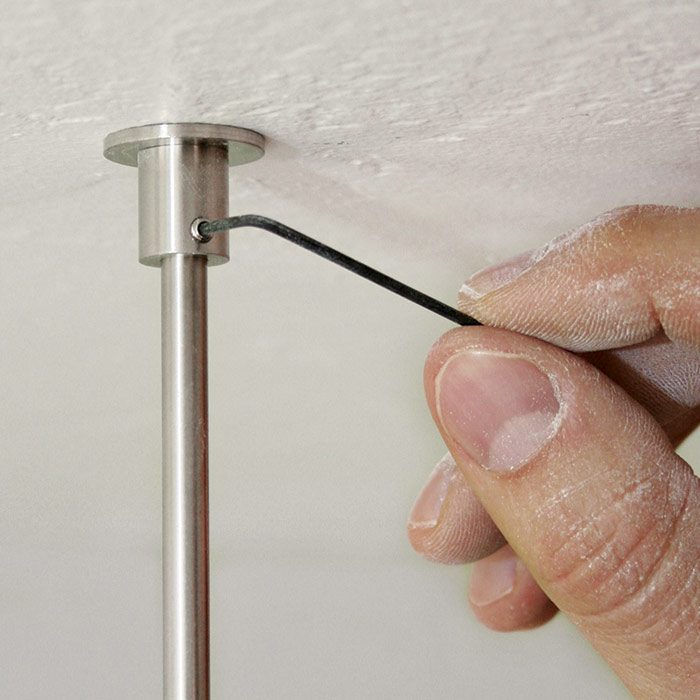 |
Mount all the standoffs so that when you raise the monorail again you can attach it quickly to the standoffs and to the bottom of the transformer housing. If you need to reposition a standoff or two, it’s easy to patch the small holes left by misplaced standoff anchors.
Mounting & Wiring the Transformer
Once the standoffs are installed, mount the ceiling box to a ceiling joist and attach the bracket that will support the transformer 1. In this case, a nipple screws into the bracket and runs through the center of the transformer housing. The supply wires sticking out of the box will connect to the primary leads on the transformer.
Feed the supply wires into the center of the transformer housing 2, push the top piece of the housing snug against the ceiling box, slip a washer over the end of the nipple, and then tighten the inside nut that secures the transformer housing 3. The circular mass inside the housing is a magnetic transformer, which has a series of copper coils.
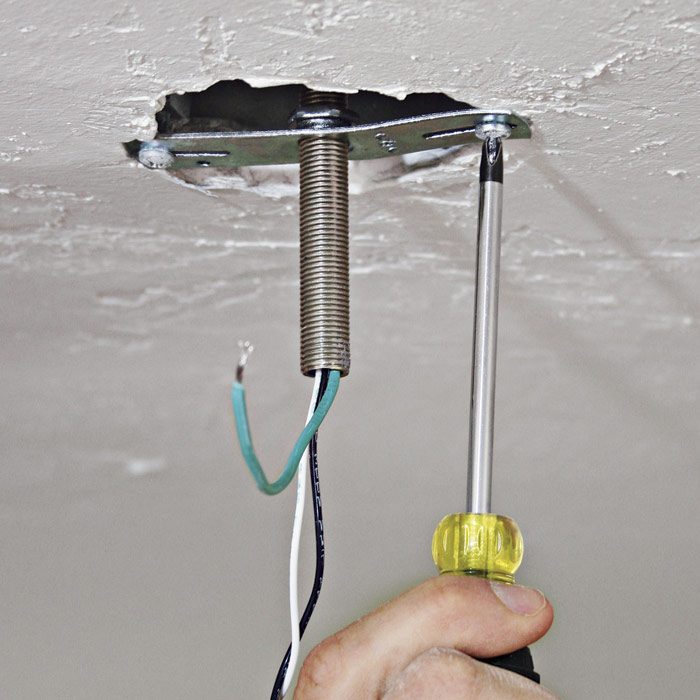 |
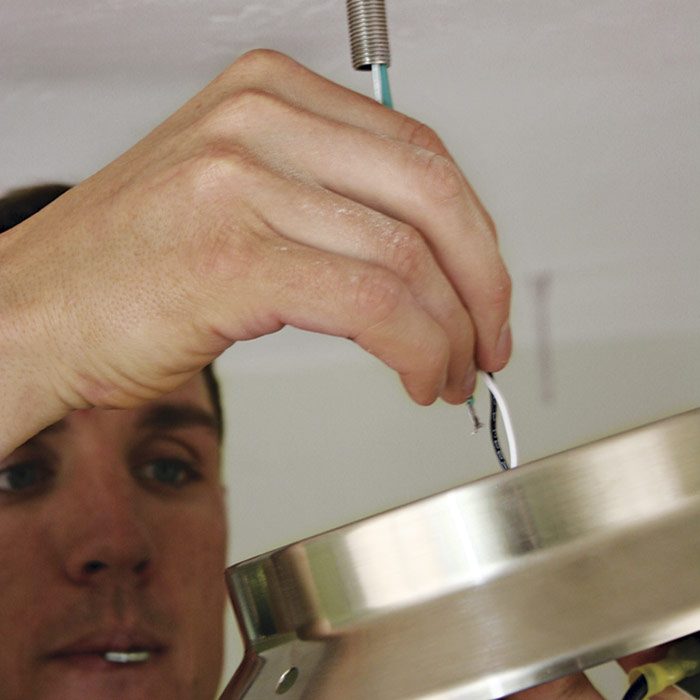 |
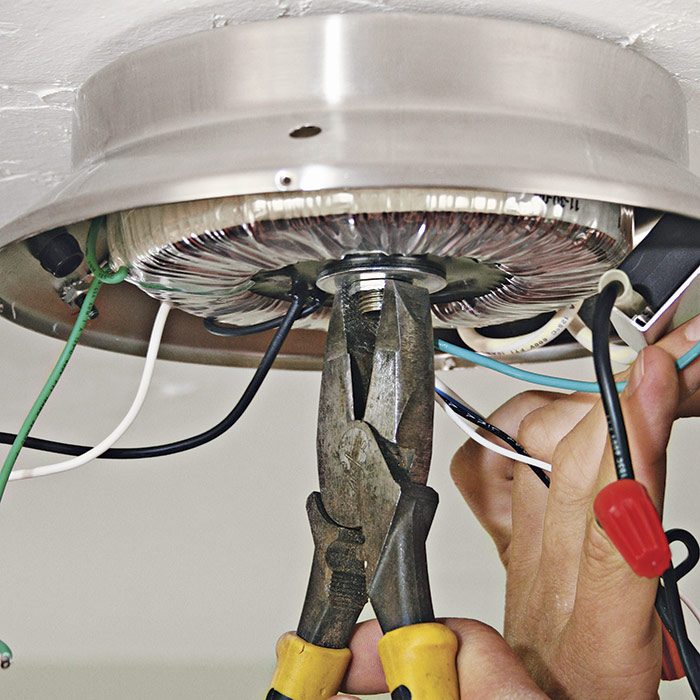 |
Many transformers come with secondary leads preattached, so that the installer need only splice supply wires to the primary fixture leads. Using the wire connectors provided, splice the ground wires first, then the neutral leads, and finally the hot wires 4. When all the wire connections are snug—gently tug on the spliced wires to be sure—close the transformer housing by snapping the bottom to the top and installing the screws provided 5. (By the way, the fat striped wires are secondary leads, which run from the transformer to the lo-vo power feed that energizes the track.)
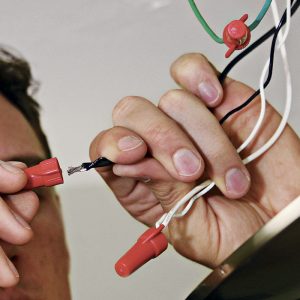 |
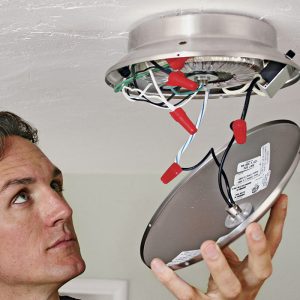 |
Hanging the Track
With the transformer secured and the standoffs installed in the ceiling, you’re ready to hang the track. Get help supporting the track until you have two or three points secured. Place the track into the track housing—the lowest piece on that assembly—then screw on the housing nipple 1. Once that’s done, tighten the setscrew that holds the nipple to the standoff post.
| PRO TIP: If you can’t find anyone to help you support the track, bend short lengths of coat hanger into Z-shaped hanger brackets. Drill a 1⁄4-in. hole into the ceiling and insert one end of the bracket; the other end supports the track. Once the track is up, remove the hangers and patch the holes with joint compound. |
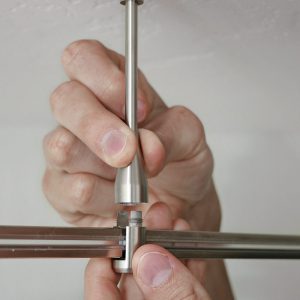 |
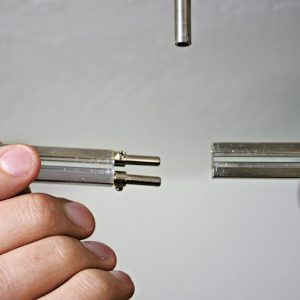 |
Where track sections meet, join them with conductive connectors and support the junction with a standoff 2. Once the track is supported at several points, loosely attach the track housing and nipple assemblies at several points, slide them beneath the support rails, and use an Allen wrench to tighten the setscrews that join the nipples to the standoff posts 3. Make sure the connections are tight.
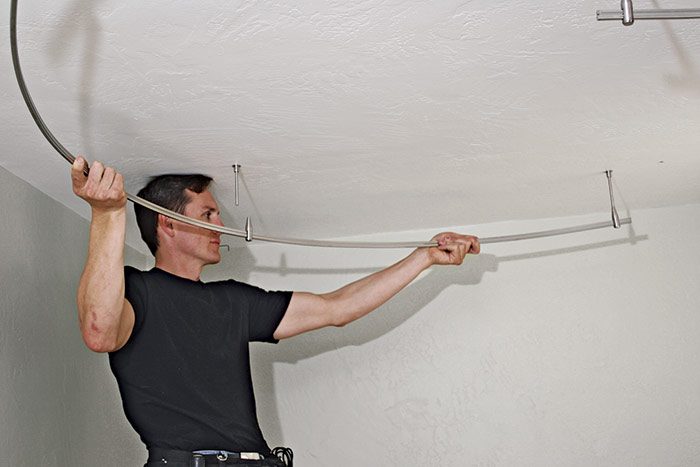
Because the housing on the bottom of the transformer has setscrews on the side and the bottom, you’ll need two different sizes of Allen wrenches. Loosen the small screw on the side of the housing nipple so you can turn it onto the threads of the housing. Once the nipple is tight on the housing, retighten that small screw. Then use a 3⁄16-in. Allen wrench to tighten the setscrew on the bottom of the housing 4. Finally, retighten all connections and place end caps on the ends of the track 5.
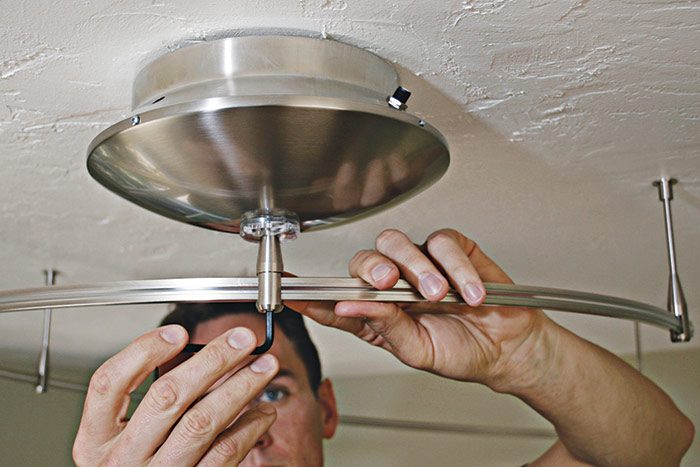 |
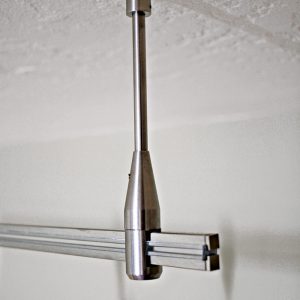 |
Installing the Light Fixtures
Once the monorail tracks are installed, you can add the light fixtures. The fixtures require a two-part assembly that straddles the monorail track; note that in this case the housing and nipples are inverted. Insert the housing on top of the track and the nipple on the bottom 1. Screw the pieces together, insert the shaft of the light fixture into the inverted nipple 2, then screw the fixture nipple onto the threaded housing nipple and hand tighten it.
 |
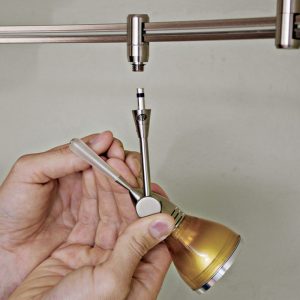 |
Attaching the pendant lights is similar, although the light pendants use braided cable rather than a solid shaft. Braided cable can be shortened if necessary, allowing you to install the pendant lights at the same or varying heights 3. Once you’ve adjusted the pendant cables, tighten the fixture nipple to the housing nipple on the track 4.
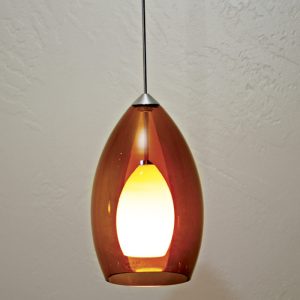 |
 |
Most manufacturers recommend energizing the system and turning the lights on for 20 minutes or 30 minutes before checking the monorail connections to see if any are hot to the touch. Warm is normal, but hot connections should be retightened 5. Do not, however, touch any halogen lights; they are certain to be hot enough to burn you (which is normal).
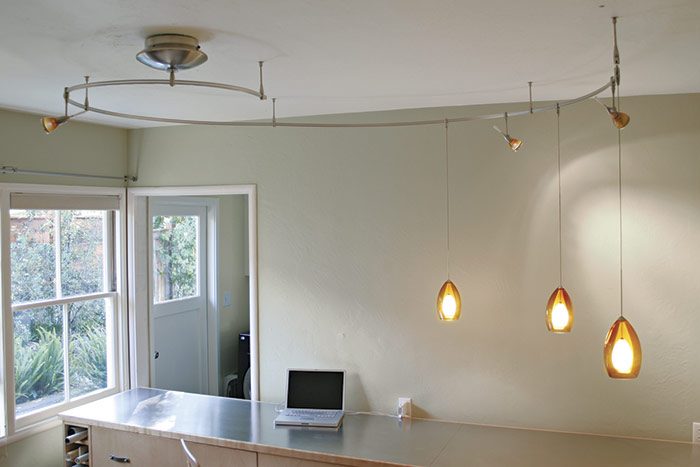
| PRO TIP: After installing a complex assembly such as mono-rail track lighting, disconnect the power and retighten all connections after the first 10 to 20 hours of use. |
Excerpted from Wiring Complete, 3rd Edition (The Taunton Press, 2017) by Michael Litchfield and Michael McAlister
Available in the Taunton Store and at Amazon.com.
